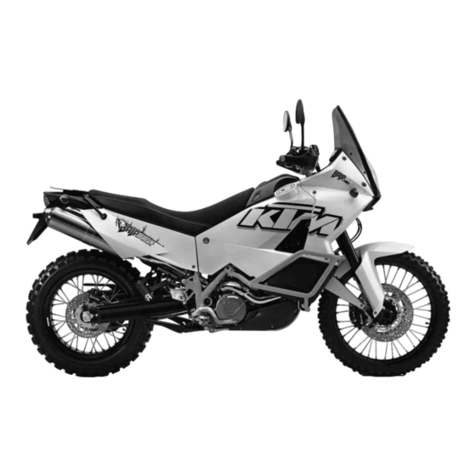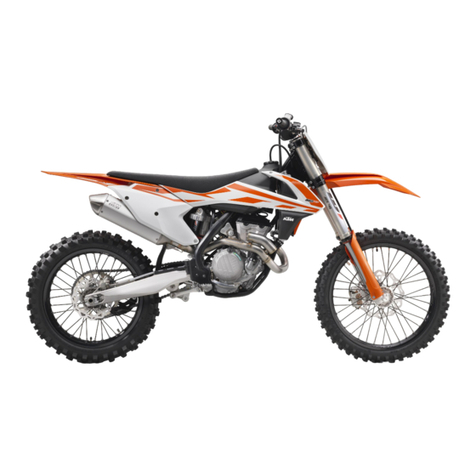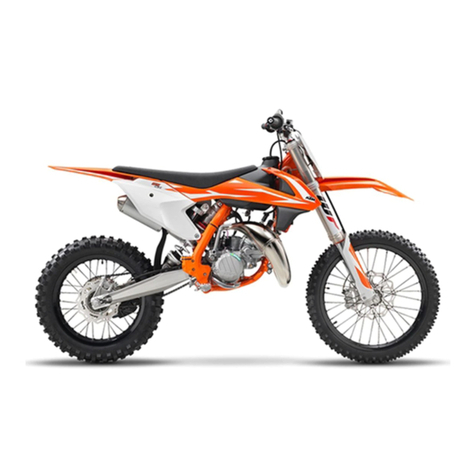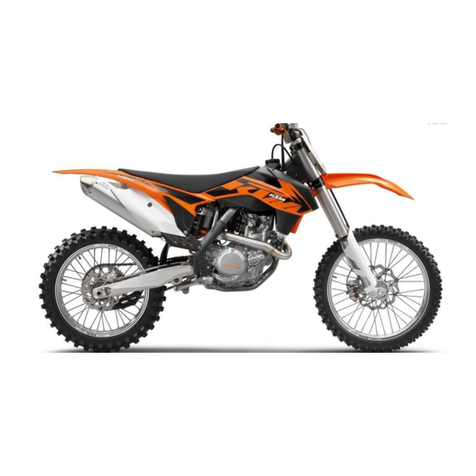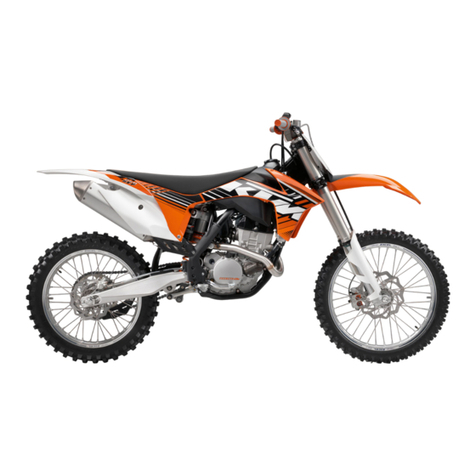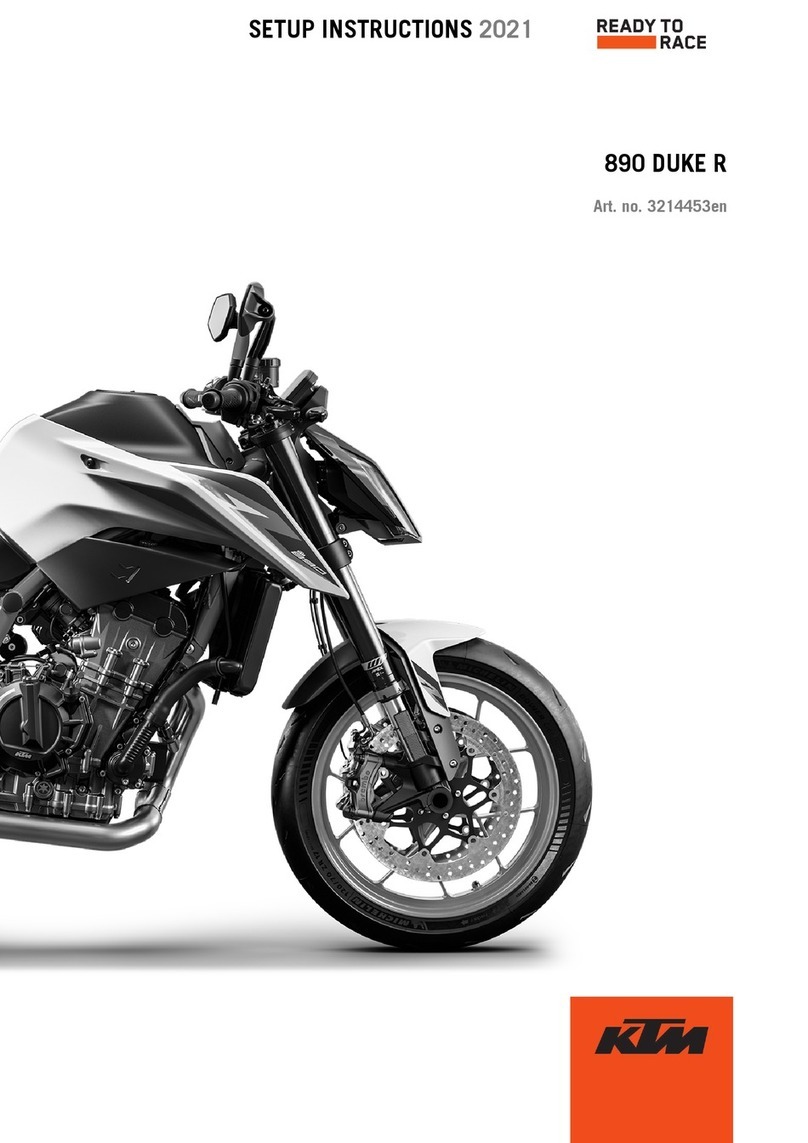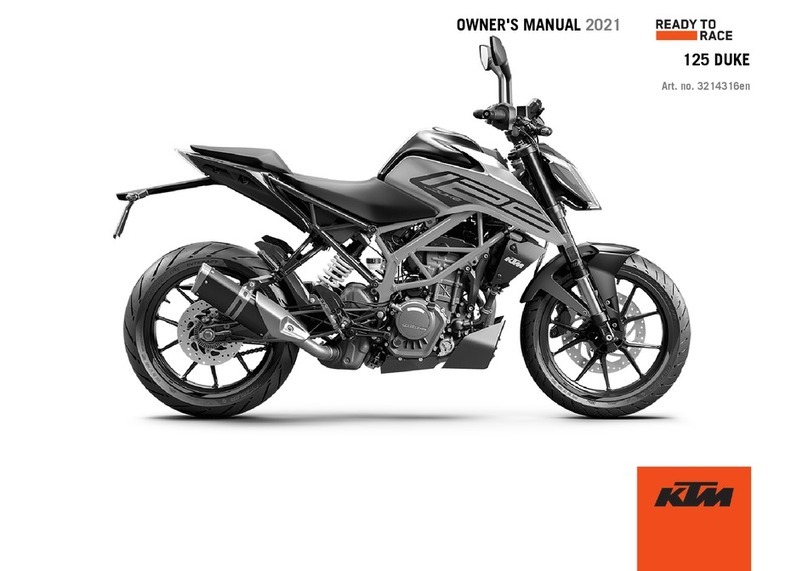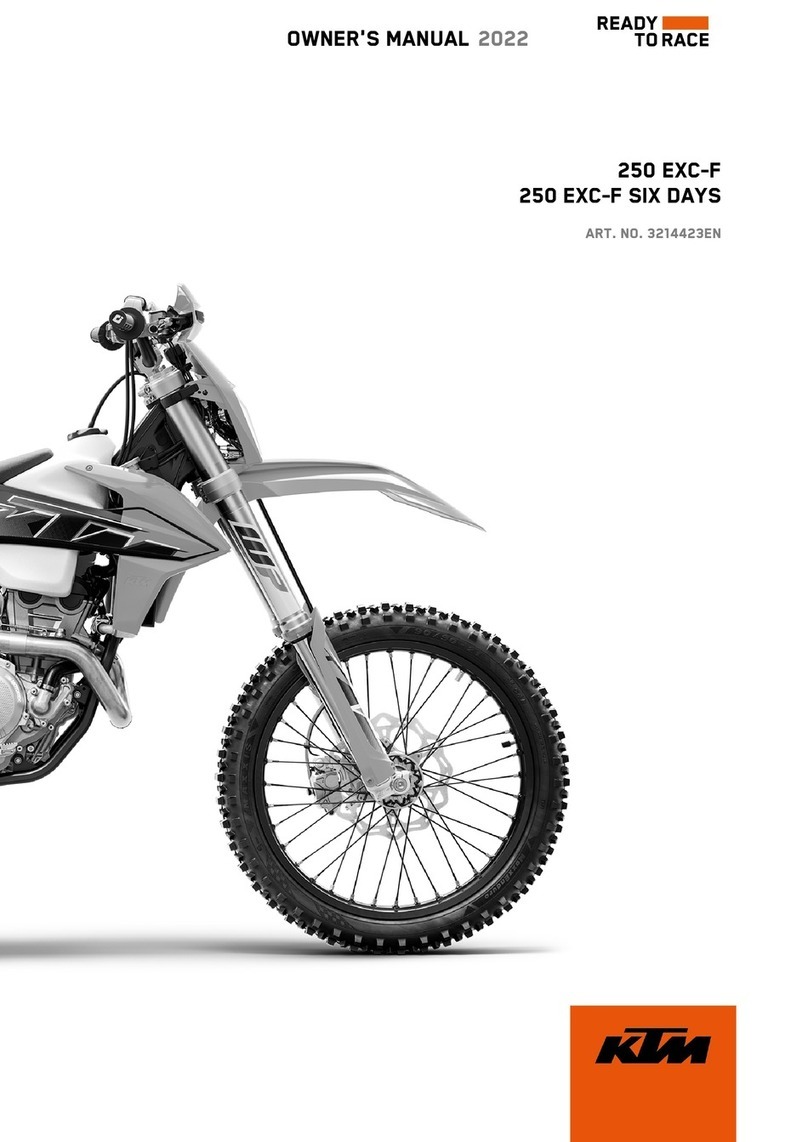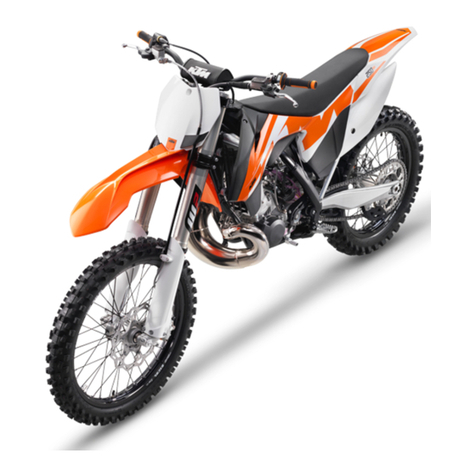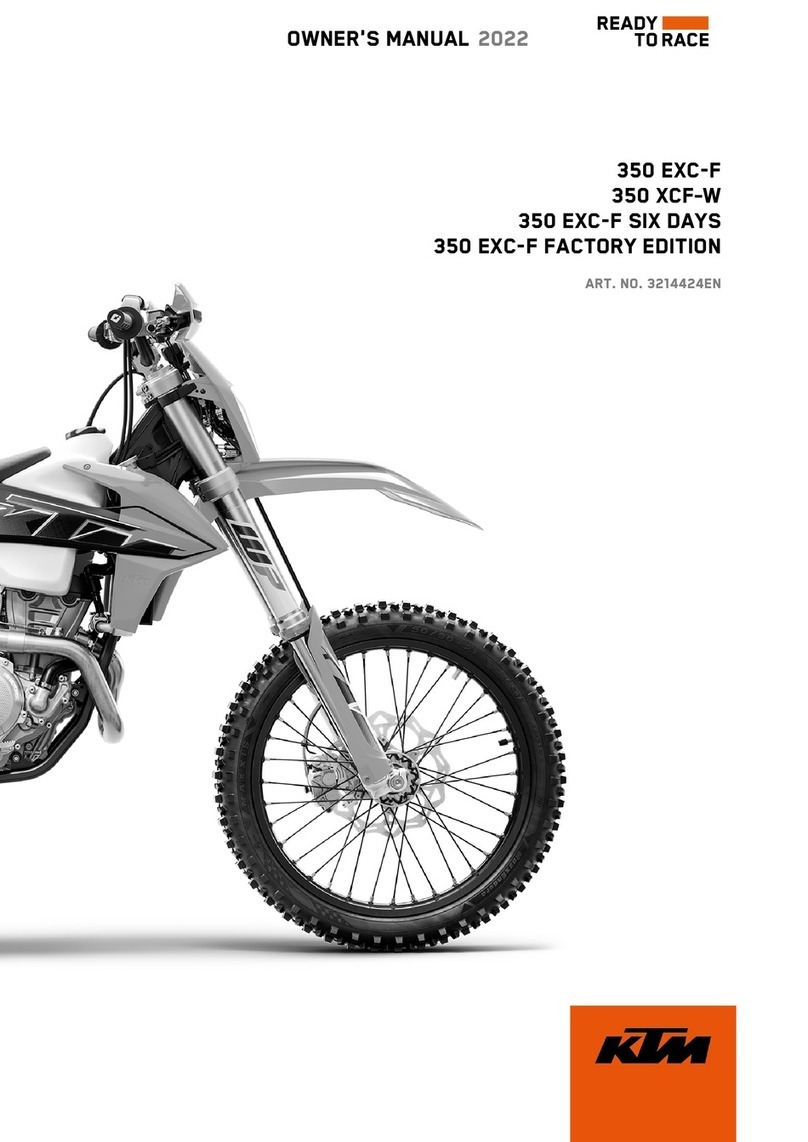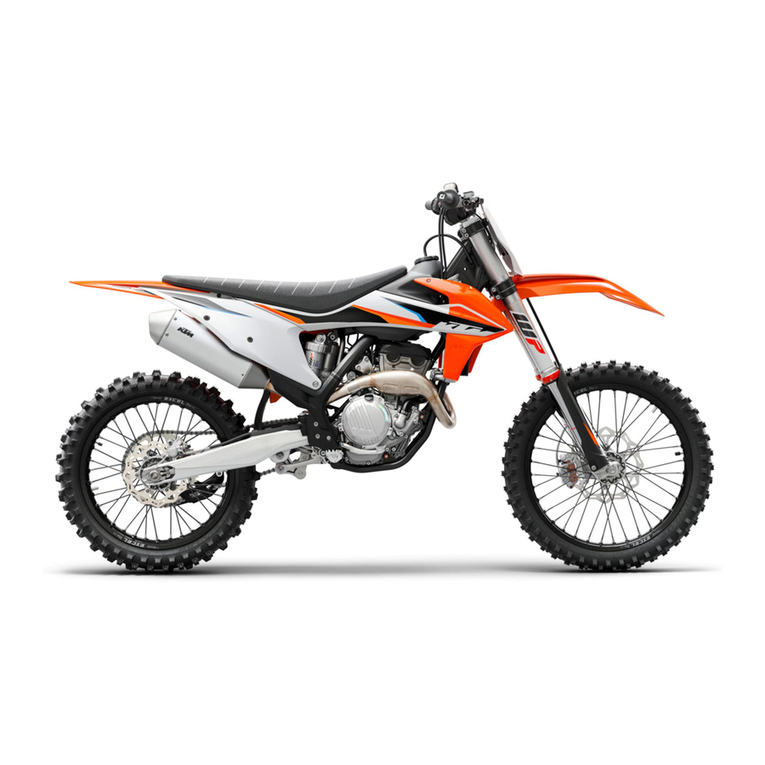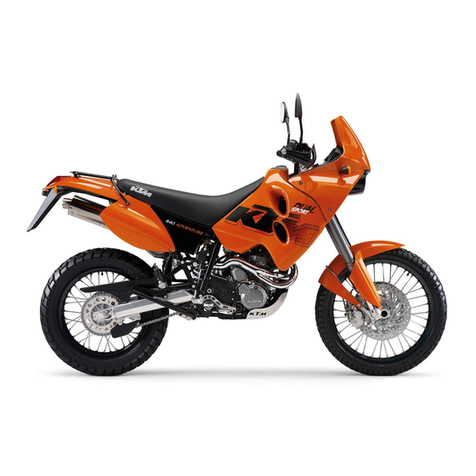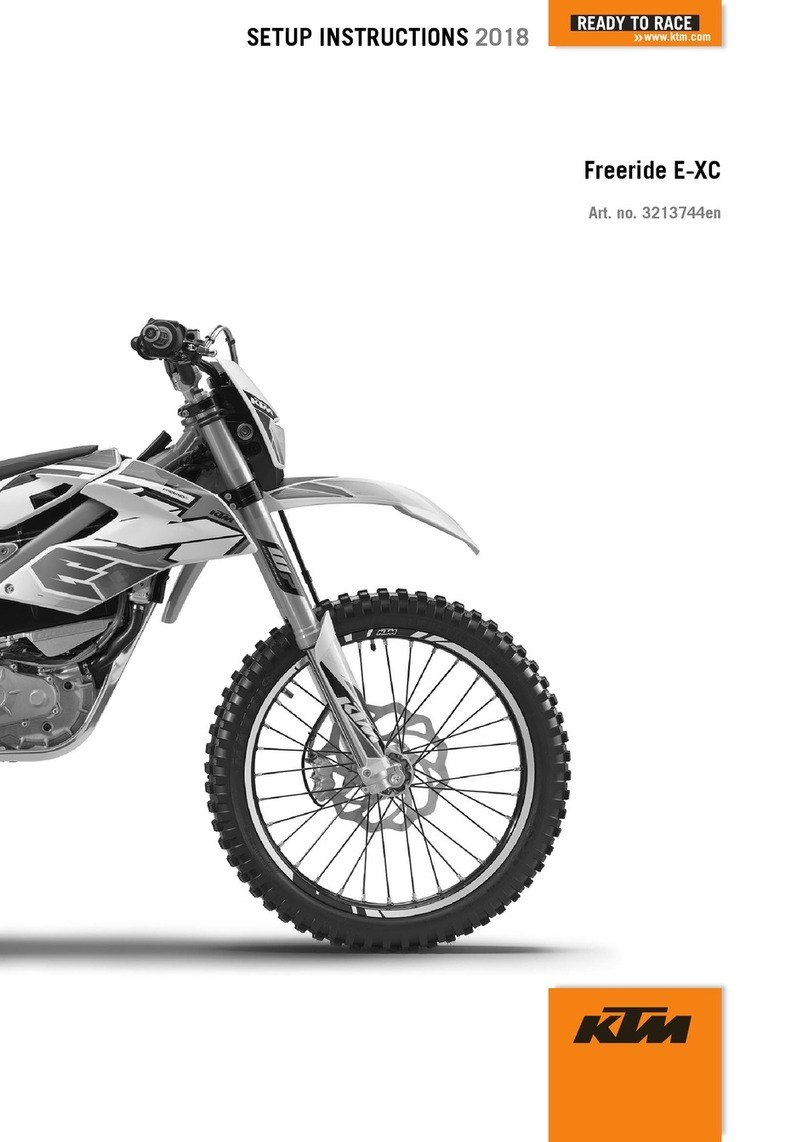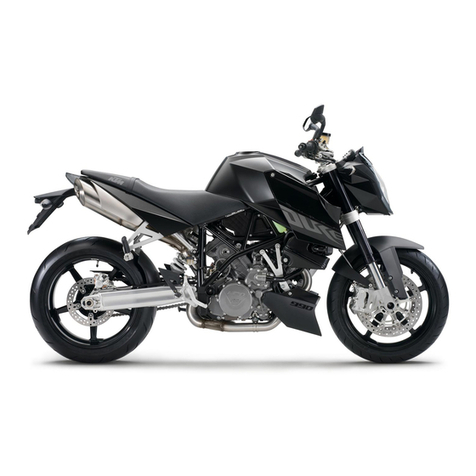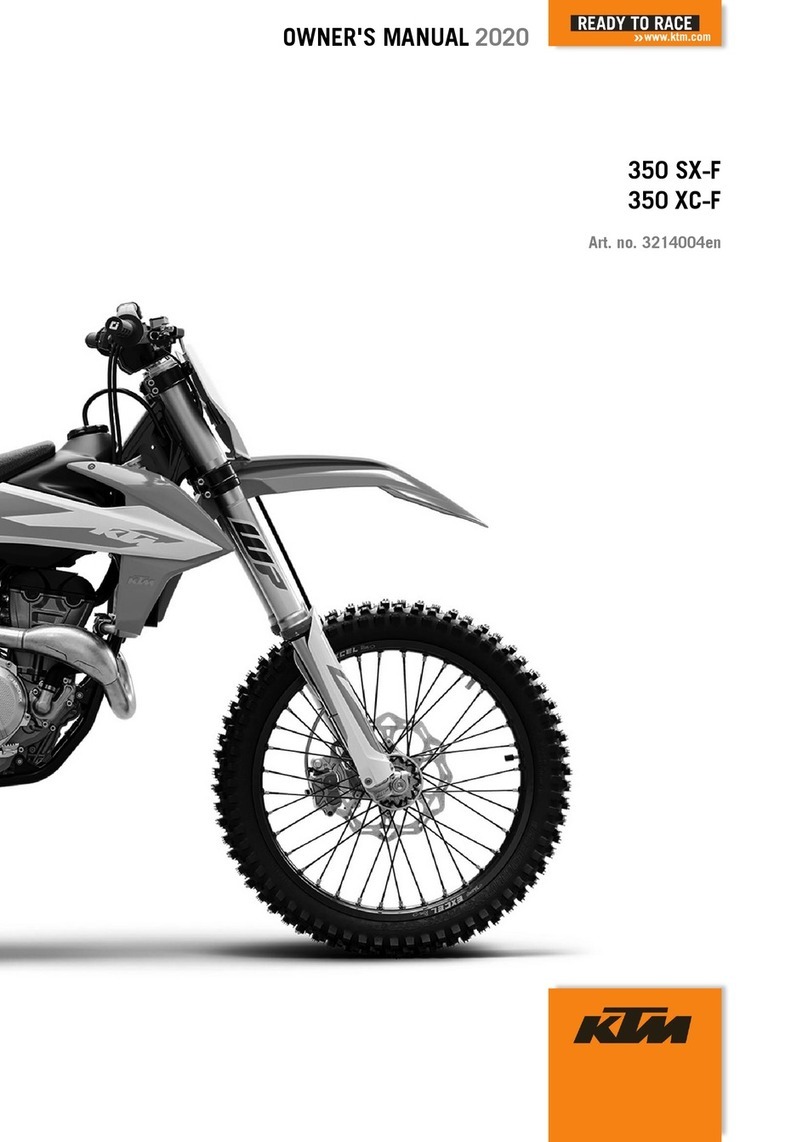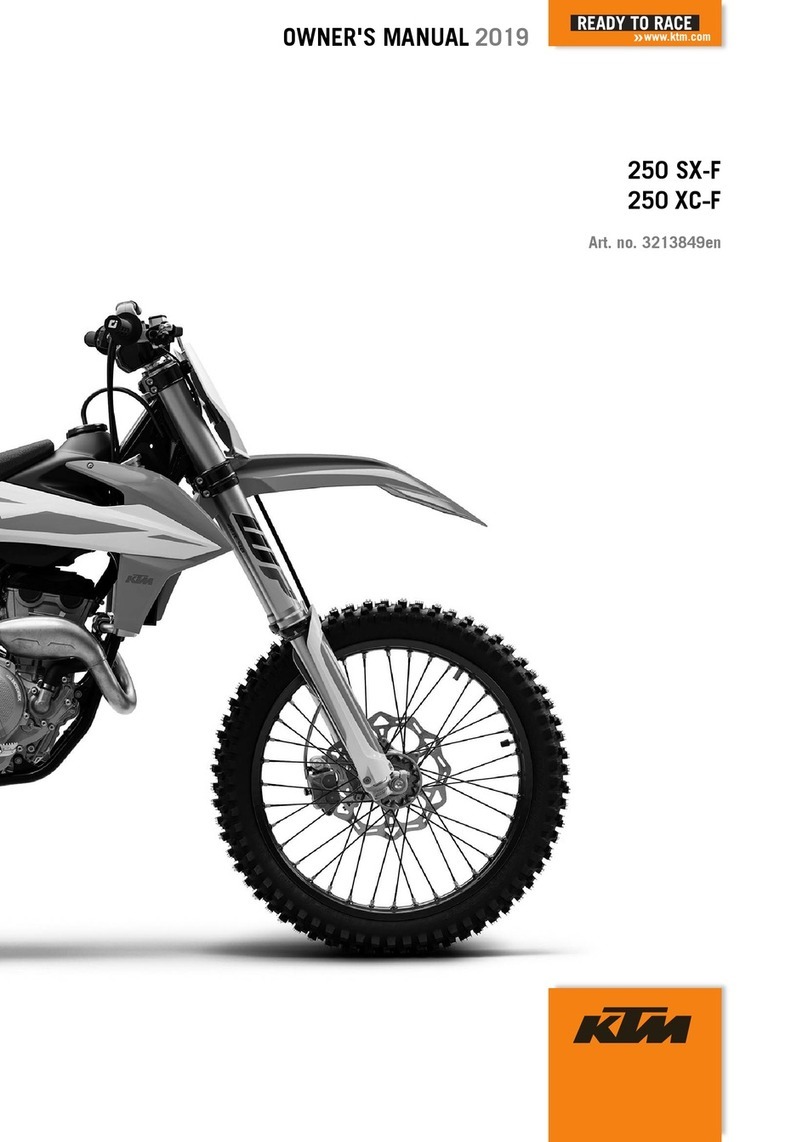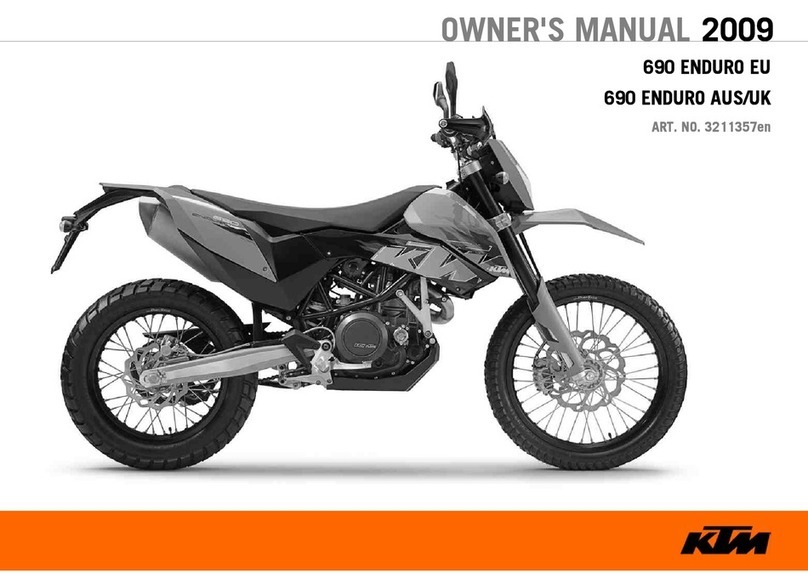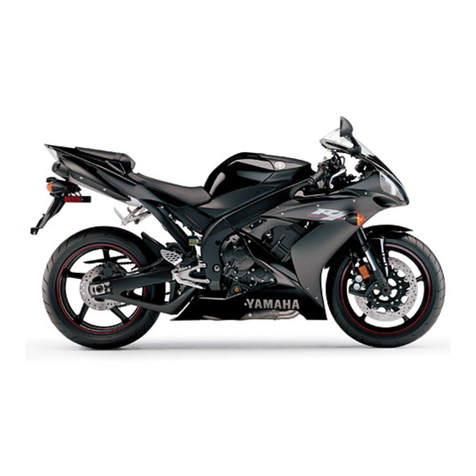ENGLISH
4
INDEX »
Page
SERIAL NUMBER LOCATIONS . . . . . . . . . . . . . . . . . . . .5
Chassis number . . . . . . . . . . . . . . . . . . . . . . . . . . . .5
Engine number, engine type . . . . . . . . . . . . . . . . . . .5
OPERATION INSTRUMENTS . . . . . . . . . . . . . . . . . . . . .5
Clutch lever . . . . . . . . . . . . . . . . . . . . . . . . . . . . . . .5
Choke lever . . . . . . . . . . . . . . . . . . . . . . . . . . . . . . . .5
Hand brake lever . . . . . . . . . . . . . . . . . . . . . . . . . . .5
Multi-functional digital speedometer . . . . . . . . . . . . . .6
Display . . . . . . . . . . . . . . . . . . . . . . . . . . . . . . . . . . .6
Setting options in the display . . . . . . . . . . . . . . . . . . .7
Cooling liquid temperature display . . . . . . . . . . . . . . .8
Indicator lamps . . . . . . . . . . . . . . . . . . . . . . . . . . . .8
Tachometer . . . . . . . . . . . . . . . . . . . . . . . . . . . . . . .8
Ignition lock . . . . . . . . . . . . . . . . . . . . . . . . . . . . . .9
Combination switch . . . . . . . . . . . . . . . . . . . . . . . . .9
Emergency OFF tip switch, light switch, starter tip switch
. .9
Storage compartment . . . . . . . . . . . . . . . . . . . . . . .10
Filler caps . . . . . . . . . . . . . . . . . . . . . . . . . . . . . . .10
Seat lock . . . . . . . . . . . . . . . . . . . . . . . . . . . . . . . .10
Fuel taps . . . . . . . . . . . . . . . . . . . . . . . . . . . . . . . .10
Shift lever . . . . . . . . . . . . . . . . . . . . . . . . . . . . . . .11
Side stand . . . . . . . . . . . . . . . . . . . . . . . . . . . . . . .11
Center stand . . . . . . . . . . . . . . . . . . . . . . . . . . . . . .11
Foot brake pedal . . . . . . . . . . . . . . . . . . . . . . . . . . .11
Compression damping of fork . . . . . . . . . . . . . . . . . .11
Rebound damping of fork . . . . . . . . . . . . . . . . . . . .12
Spring preload of the fork . . . . . . . . . . . . . . . . . . . .12
Damping action during compression of shock absorber . .12
Rebound damping of shock absorber . . . . . . . . . . . .12
Shock absorber's preload adjuster . . . . . . . . . . . . . . .13
Baggage carrier plate . . . . . . . . . . . . . . . . . . . . . . . .13
Grips . . . . . . . . . . . . . . . . . . . . . . . . . . . . . . . . . . .13
Footrests . . . . . . . . . . . . . . . . . . . . . . . . . . . . . . . .13
GENERAL TIPS AND WARNINGS FOR STARTING
THE MOTORCYCLE . . . . . . . . . . . . . . . . . . . . . . . . . . .14
Instructions for initial operation . . . . . . . . . . . . . . .14
Running in the LC8 engine . . . . . . . . . . . . . . . . . . .14
Accessories and payload . . . . . . . . . . . . . . . . . . . . .14
DRIVING INSTRUCTIONS . . . . . . . . . . . . . . . . . . . . . .15
Check the following before each start . . . . . . . . . . .15
Starting when the engine is cold . . . . . . . . . . . . . . .16
Starting when the engine is warm or hot . . . . . . . . .16
Braking . . . . . . . . . . . . . . . . . . . . . . . . . . . . . . . . .17
Stopping and parking . . . . . . . . . . . . . . . . . . . . . . .17
Starting off . . . . . . . . . . . . . . . . . . . . . . . . . . . . . .17
Shifting/Riding . . . . . . . . . . . . . . . . . . . . . . . . . . . .17
Fuel . . . . . . . . . . . . . . . . . . . . . . . . . . . . . . . . . . . .18
PERIODIC MAINTENANCE SCHEDULE . . . . . . . . . . . . .20
MAINTENANCE WORK ON CHASSIS AND ENGINE . . . .22
Removing and remounting the seat . . . . . . . . . . . . .22
Tool set . . . . . . . . . . . . . . . . . . . . . . . . . . . . . . . . .22
Adjusting the fork and shock absorber . . . . . . . . . .23
Adjusting compression damping of fork . . . . . . . . . .23
Adjusting rebound damping of fork . . . . . . . . . . . . .23
Adjusting the spring preload on the fork . . . . . . . . . .23
Compression damping of shock absorber . . . . . . . . .24
Rebound damping of shock absorber . . . . . . . . . . . .24
Page
Adjusting the preload of the shock absorber . . . . . . .25
Breathing the fork legs . . . . . . . . . . . . . . . . . . . . .25
Cleaning the dust sleeves of the telescopic fork . . . .25
Checking the chain tension . . . . . . . . . . . . . . . . . . .25
Correct chain tension . . . . . . . . . . . . . . . . . . . . . . .26
Chain maintenance . . . . . . . . . . . . . . . . . . . . . . . .26
Checking the chain for wear . . . . . . . . . . . . . . . . . .26
General informations about KTM disc brakes . . . . . .27
Adjusting of free travel at the hand brake lever . . . . .28
Checking of brake fluid level - front brake . . . . . . . .28
Refilling the front brake fluid reservoir . . . . . . . . . . .28
Checking the front brake pads . . . . . . . . . . . . . . . . .28
Changing the basic position of the foot brake lever . .29
Checking rear brake fluid level . . . . . . . . . . . . . . . . .29
Refilling the rear brake fluid reservoir . . . . . . . . . . . .29
Checking the rear brake pads . . . . . . . . . . . . . . . . .29
Dismounting and mounting the front wheel . . . . . . . .30
Dismounting and mounting the rear wheel . . . . . . . . .31
Checking the shock absorption rubbers in the rear hub . . . . .31
Tires, air pressure . . . . . . . . . . . . . . . . . . . . . . . . . .32
Checking spoke tension . . . . . . . . . . . . . . . . . . . . . .32
Battery . . . . . . . . . . . . . . . . . . . . . . . . . . . . . . . . . .32
Demounting and mounting the battery . . . . . . . . . . .33
Charging the battery . . . . . . . . . . . . . . . . . . . . . . . .33
Connecting the battery jumper cable . . . . . . . . . . . .33
Main fuse . . . . . . . . . . . . . . . . . . . . . . . . . . . . . . .34
Fuses for individual current consumers . . . . . . . . . .34
Replacing the headlight lamps . . . . . . . . . . . . . . . . .35
Adjusting the headlight range . . . . . . . . . . . . . . . . . .36
Replacing the brake and tail light bulbs . . . . . . . . . .36
Replacing the flasher bulbs . . . . . . . . . . . . . . . . . .36
Cooling system . . . . . . . . . . . . . . . . . . . . . . . . . . . .37
Checking the cooling liquid level in the compensating tank . .37
Checking the cooling liquid level in the radiator . . . . .38
Changing the original position of the clutch lever . . . .38
Checking the oil level of the hydraulic clutch . . . . . .38
Checking and adjusting the throttle cable play . . . . . .38
Checking and adjusting the choke cable play . . . . . . .39
Adjusting the engine idle speed . . . . . . . . . . . . . . . .39
Engine oil . . . . . . . . . . . . . . . . . . . . . . . . . . . . . . . .39
Checking the engine oil level . . . . . . . . . . . . . . . . .39
Changing the engine oil and the oil filter, cleaning
the oil screen . . . . . . . . . . . . . . . . . . . . . . . . . . . . .40
Activating the ignition curve for low-octane fuel . . . .43
TROUBLE SHOOTING . . . . . . . . . . . . . . . . . . . . . . . . .44
CLEANING . . . . . . . . . . . . . . . . . . . . . . . . . . . . . . . . .46
CONSERVATION FOR WINTER OPERATION . . . . . . . . .46
STORAGE . . . . . . . . . . . . . . . . . . . . . . . . . . . . . . . . . .46
RE-INITIATION AFTER TIME OF STORAGE . . . . . . . . .46
TECHNICAL SPECIFICATIONS - CHASSIS . . . . . . . . . . .47
TECHNICAL SPECIFICATIONS - ENGINE . . . . . . . . . . .49
HEAD WORD INDEX . . . . . . . . . . . . . . . . . . . . . . . . . .51
WIRING DIAGRAM . . . . . . . . . . . . . . . . . . . . . .APPENDIX
CONSUMER INFORMATION USA ONLY . . . . . . .APPENDIX
